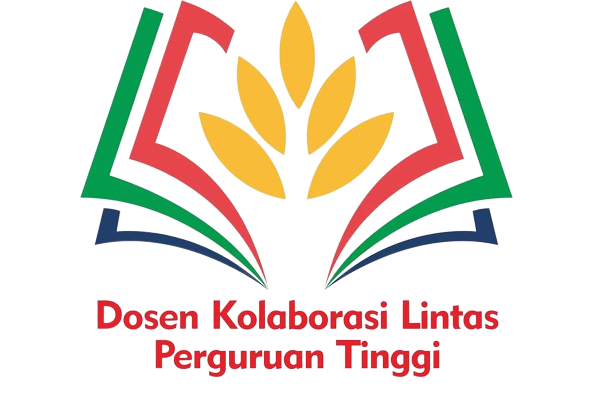Connection Between Support Social Friend Peers with Subjective Well-Being in Street Children
DOI:
https://doi.org/10.69812/ijsps.v1i1.43Keywords:
Social Support, Well-Being, Street ChildrenAbstract
This study aims to investigate the relationship between peer social support and subjective well-being among street children. Street children are particularly vulnerable to negative emotional and psychological effects due to their harsh living conditions. This research used a quantitative approach with a correlational method to analyze the data. The sample consisted of 100 street children aged 12-18 years, selected through accidental sampling. The data were collected using questionnaires, and the relationship between the two variables was analyzed using Spearman's Rho correlation analysis. The subjective well-being of participants was measured using the scale developed by Diener, while social support was measured using the Sarafino scale. The results of the analysis indicated a significant positive correlation (r = 0.797, p < 0.01) between peer social support and subjective well-being. This means that higher levels of peer social support are associated with higher levels of subjective well-being in street children. The findings suggest that social support from peers plays a crucial role in enhancing the emotional and psychological health of street children. The study concludes that fostering positive peer relationships can improve subjective well-being, highlighting the importance of peer support in the lives of street children. Future research could explore other variables that influence subjective well-being to deepen our understanding of this issue complated.
Downloads
References
Anam, A. C. (2007). Peran dukungan sosial dan self efficacy terhadap motivasi berprestasi pada atlet pencak silat tingkat SMA/K di Kota Yogyakarta [Unpublished undergraduate thesis]. Universitas Negeri Yogyakarta.
Arsi, A. (2021). Steps to test the validity and reliability of instruments using SPSS. Darul Dakwah Wal-Irsyad Islamic College (STAI), 1-8.
Diener, E. (1994). Assessing subjective well-being: Progress and opportunities. Social Indicators Research, 31(2), 103-157. https://doi.org/10.1007/BF01207052
Diener, E. (2000). Subjective well-being: The science of happiness and a proposal for a national index. American Psychologist, 55(1), 34-43. https://doi.org/10.1037/0003-066X.55.1.34
Diener, E., Oishi, S., & Lucas, R. E. (2003). Personality, culture, and subjective well-being: Emotional and cognitive evaluations of life. Annual Review of Psychology, 54(1), 403-425. https://doi.org/10.1146/annurev.psych.54.101601.14505
Diener, E., & Ryan, K. (2009). Subjective well-being: A general overview. South African Journal of Psychology, 39(4), 391-406. https://doi.org/10.1177/008124630903900402
Jasman, N. V., & Prasetya, B. E. A. (2023). Connection between support social peers and subjective well-being in street children in the city of Jayapura. Open Journal Systems, 17(6), 1087-1098.
Manalu, H. A., & Wibowo, D. H. (2021). Self-concept and juvenile delinquency in street children. Psyche Scientific Journal, 15(2), 125-134. https://doi.org/10.33557/jpsyche.v15i2.1554
Muthmainah, S., Situmorang, N. Z., & F. (2018). Description of subjective well-being in disabled women. University Research Colloquium, 8(1), 143-147.
Octaria, Y., & Pardede, K. (2008). Draft self-concept of street children in adolescence. Journal of Psychology, 1(1), 146-151.
Rahama, K., & Izzati, U. A. (2021). Connection between social support and psychological well-being on employees. Journal of Study Psychology, 8(7), 94-106.
Rama, D. C. D., Psychology, P., Choli, J., & Purwantini, L. (2024). The relationship between social support and self-esteem with subjective well-being in students at Islamic University "45" Bekasi. Journal of Education and Science Social, 2(2), 194-205. https://doi.org/10.54066/jupendis.v2i2.1535
Rook, K. S., & Dooley, W. (1985). Dukungan sosial. e-Psikologi. Retrieved from http://www.e-Psikologi.com
Suci, D. T. (2017). Street children's self-concept. SCHOULID: Indonesian Journal of School Counseling, 2(2), 14. https://doi.org/10.23916/08439011
Sarafino, E. P., & Smith, T. W. (2011). Health psychology: Biopsychosocial interactions. John Wiley & Sons Inc.
Sarafino, E. P. (n.d.). Health psychology: Biopsychosocial interaction (2nd ed.). Trenton State College: PT. Heirloom Beautiful Chakra.
Setyaningrum, A. (2015). Pengaruh dukungan sosial orang tua terhadap motivasi berprestasi siswa kelas V Sekolah Dasar di Gugus Hasanudin Kabupaten Cilacap Tahun Ajaran 2014/2015 [Unpublished undergraduate thesis]. Universitas Negeri Yogyakarta.
Stanley, A., & Beare, D. (2007). Teaching nursing gerontology. EGC.
Sugiyono. (2009). Metode penelitian kuantitatif, kualitatif dan R&D. Alfabeta.
Sugiyono. (2016). Metode penelitian kuantitatif, kualitatif, dan R&D. Alfabeta.
Wahyuni, N. S., Psychology, F., & Medan, U. (2016). The relationship between peer social support and socialization ability in State Vocational School 3 students. 2(2).
Wardana, K. A., & Ardhy, A. K. (2021). Action social community to save street children in empowerment child street. Angewandte Chemie International Edition, 6(11), 951-952.
Wijaya, K. A., & Pratisti, W. D. (n.d.). The relationship between self-esteem and social support with the subjective well-being of Solo Raya students.
Downloads
Published
How to Cite
Issue
Section
License
Copyright (c) 2024 Nirmala Yunita Halim, Suroso Suroso, Isrida Yul Arifiana

This work is licensed under a Creative Commons Attribution-ShareAlike 4.0 International License.
You are free to:
- Share — copy and redistribute the material in any medium or format for any purpose, even commercially.
- Adapt — remix, transform, and build upon the material for any purpose, even commercially.
- The licensor cannot revoke these freedoms as long as you follow the license terms.
Under the following terms:
- Attribution — You must give appropriate credit, provide a link to the license, and indicate if changes were made . You may do so in any reasonable manner, but not in any way that suggests the licensor endorses you or your use.
- ShareAlike — If you remix, transform, or build upon the material, you must distribute your contributions under the same license as the original.
- No additional restrictions — You may not apply legal terms or technological measures that legally restrict others from doing anything the license permits.













